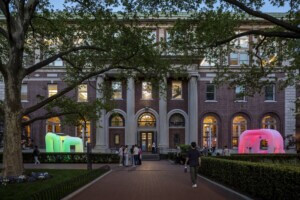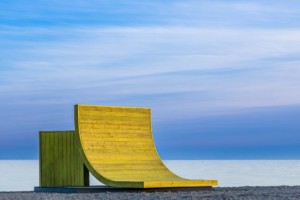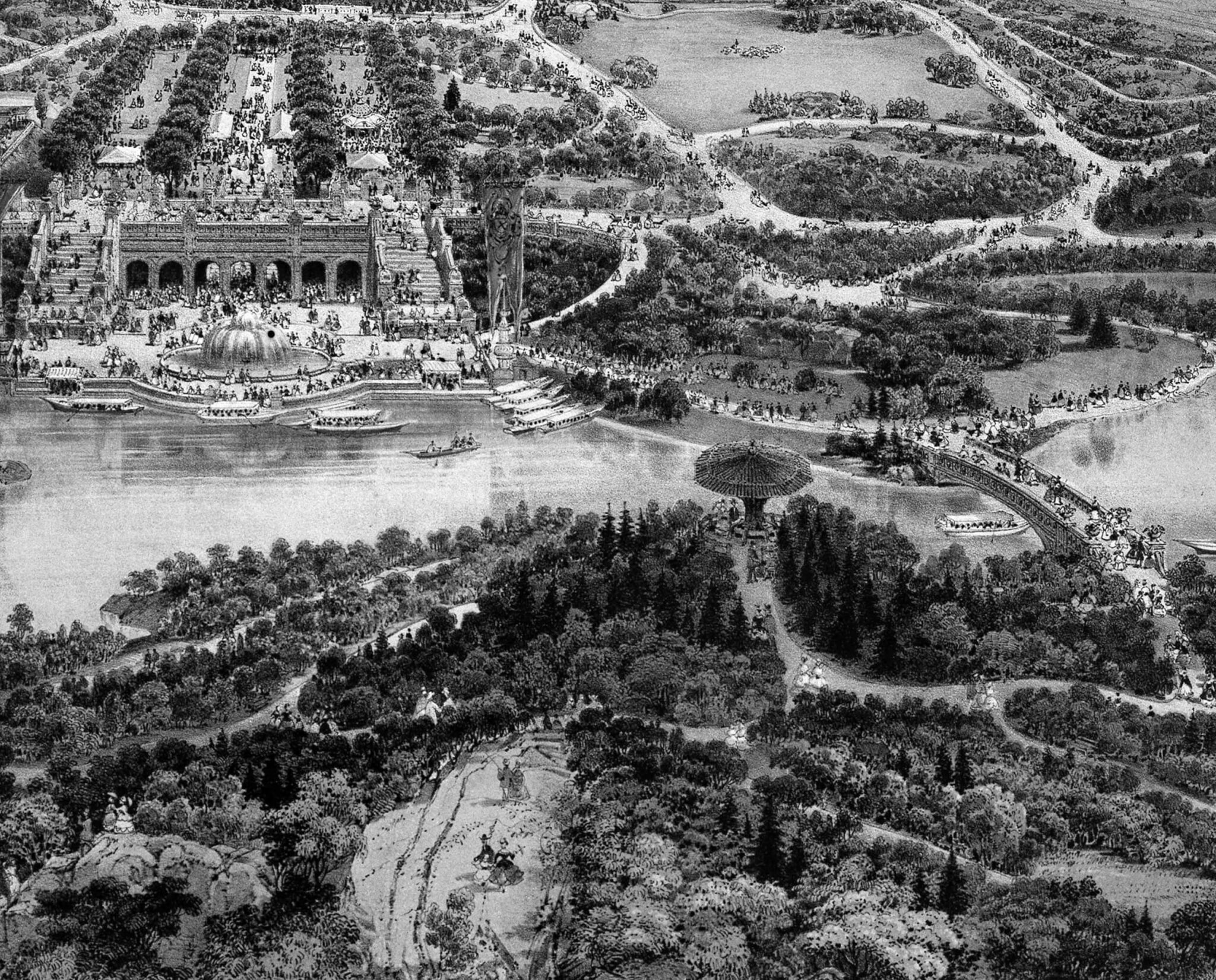The offices of Landing Studio are cluttered with “industrial fossils,” as principal Marie Law Adams calls them: vials of rock salt, cross-sections of old oak piers,
a chunk of slag discovered during the demolition of a jet fuel tank. In between the piles of design books, they form a trail of breadcrumbs back to the firm’s founding in 2005, when Adams was hired along with her partner and co-principal Dan Adams to make an attractive public space out of a defunct shipping terminal in Chelsea, Massachusetts. That project went on to win awards for the way it reconciled industrial and recreational uses on the site without diminishing either. It’s typical of Landing Studio’s work, which brings high design to industrial clients that typically don’t get much more sophisticated in their design process than making sure they clear the zoning board.
That work continues today, in the fittingly unrefined Boynton Yards District of Somerville, Massachusetts. Several employees share a unit with the firm Reverse Architecture in a converted four-story mill building whose other tenants include two chocolatiers and a fencing club. The building is like Landing Studio’s work itself: Not exactly postindustrial, but wrapped in the eclecticism and grittiness that the word implies; not just a pretty relic of the past, but something still alive and evolving.
“People, when they hear about our work, immediately start talking about postindustrial sites,” said Dan. “That for us was very jarring, that in the design community people would always say, ‘Oh industry, that’s an interesting niche.’ Industry probably shouldn’t be thought of as a niche. It’s much larger.”
When it comes to urban planning, the partners said, that reductive “postindustrial” mindset often means disparate industrial uses get lumped together. Oil tank farms and salt piles are very different uses that present different opportunities for a designer. But without a firm like Landing Studio, they’re usually glossed over with the same “industrial site” protocol.
“There’s no character like the architect who would negotiate between traffic engineering, civil engineering, and everything that would add up to the operations
on the site,” said Marie. “It’s kind of a reflection on the urban landscape. The traditional role of the architect to mediate between a lot of disciplines is something that I think is a new way of working with industrial clients.”
Rock Chapel Marine and Port
Chelsea, Massachusetts
Landing Studio’s Chelsea harbor project is still the only publicly accessible portion of the town’s industrial waterfront. Bordering a dense residential neighborhood, the six-acre site turns a jet fuel and asphalt-batching terminal into a shared landscape for public recreation and road salt storage. “Do you just try to eliminate industry? Well, how does that serve the sustainability of the region? You’re just displacing the burden somewhere else,” said Dan. “In the case of the Boston Harbor, now it’s very nice to live near the water, but how do you preserve the viability of the region?”Unlike Duisburg-Nord in Germany or the High Line in New York, he says, this is still an active industrial area. “People now like the industrial aesthetic, so it makes it easier for them to stomach actual active industry,” said Adams. “Even though that’s just a kind of dead trophy.”
Marginal
Boston
A temporary installation developed for the 2015 Boston Design Biennial, Marginal dug deep into the history of its site: the Boston Greenway. With the help of Fitzgerald Shipyard, Landing Studio salvaged eight oak pilings from the Boston Harbor, which were originally used to make new industrial land for the growing port. “Throughout the harbor there’s still this kind of message of the interface between land and water,” said Marie. “That’s how Boston was built, basically by wharfing out piers.” Landing Studio sliced the old piers into 2,000 discs and stacked them into a grid of 18 LED-illuminated piers on dry land in downtown Boston.“We like this continuum: when is something global or local? When is it industrial or natural?” said Dan. “These artifacts, they’re at the margins of our definitions of things.”
Marginal
Boston
A temporary installation developed for the 2015 Boston Design Biennial, Marginal dug deep into the history of its site: the Boston Greenway. With the help of Fitzgerald Shipyard, Landing Studio salvaged eight oak pilings from the Boston Harbor, which were originally used to make new industrial land for the growing port. “Throughout the harbor there’s still this kind of message of the interface between land and water,” said Marie. “That’s how Boston was built, basically by wharfing out piers.” Landing Studio sliced the old piers into 2,000 discs and stacked them into a grid of 18 LED-illuminated piers on dry land in downtown Boston.“We like this continuum: when is something global or local? When is it industrial or natural?” said Dan. “These artifacts, they’re at the margins of our definitions of things.”
Infra-Space 1
Boston
Designed collaboratively with the Massachusetts Department of Transportation and engineering firm VHB, Infra-Space is the first in a series of unlikely urban revivals. Using lighting installations, bike paths, and stormwater-absorbing landscape design, Landing Studio turned 13 acres of unused land underneath the I-93 viaduct in Boston’s South End into a multi-modal transportation hub. Paid parking sustains the site financially, while recreational use turns a once foreboding underpass into an inviting public space. “The architecture of the freeway becomes really open and monumental,” said Marie.
Lumen. (Courtesy Landing Studio)
Lumen
New York City
This summer, Landing Studio will contribute to their fourth “LUMEN,” a one-night film and performance art festival in New York. On a maritime salt dock on the northern shore of Staten Island, Landing Studio builds salt pile landscapes with theatrical illumination, turning mounds of salt into a convertible gallery for artist installations.










